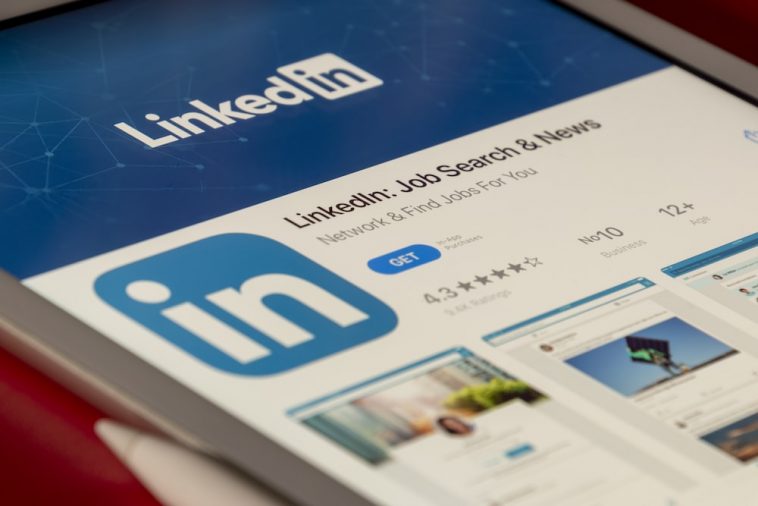If you’re creating digital products—ebooks, templates, courses, guides, presets, or anything else that can be downloaded—LinkedIn might not be the first place that comes to mind for selling them.
But it should be.
I’ve seen creators, consultants, coaches, and freelancers make thousands of dollars from a single LinkedIn post. No fancy sales page. No email funnel. Just sharing the right product, with the right audience, at the right time.
LinkedIn isn’t just for resumes anymore. It’s become a powerful platform for personal branding, storytelling, and, yes—selling. Especially if your digital product helps professionals, creators, or business owners solve a problem.
Let’s walk through how to use LinkedIn to sell your digital products—step by step. No fluff. No complicated strategies. Just simple, practical actions that actually work.
Why LinkedIn Works So Well For Selling Digital Products
LinkedIn has over 1 billion members as of 2024. That’s not the impressive part though.
What makes LinkedIn so valuable is the mindset people are in when they’re on the platform. Unlike Instagram or TikTok, where people scroll for fun, LinkedIn users are there to learn, grow professionally, and find solutions.
That’s gold if you’re selling something educational, helpful, or business-related.
And the algorithm? It’s built for organic reach. I’ve seen posts from small accounts go viral with just the right message. That kind of exposure is hard to get anywhere else without spending on ads.
Here’s what I’ve learned from watching creators quietly earn thousands from a single post: LinkedIn rewards authenticity, consistency, and clarity.
You don’t need to be a LinkedIn influencer. You just need a good product and a strategy.
What Kind of Digital Products Work on LinkedIn?
Let me be clear—not every product will work on LinkedIn. The platform favors professional or skill-based content. So think:
Notion templates for productivity or business
Ebooks on marketing, personal branding, or freelancing
Resume or LinkedIn profile templates
Downloadable guides for small business owners
Mini-courses or workshops on specific skills (copywriting, SEO, cold email, etc.)
AI prompt packs, code snippets, or automation workflows
If your product helps someone do their job better, build a business, or grow a skill, it probably has a place on LinkedIn.
How do I Sell Digital Products On LinkedIn?
1. Build a Profile That Looks Legit
Your profile is your landing page. Before you start selling, make sure it clearly shows:
Who you help
What you do
A link to your product (or Linktree/Gumroad/Shopify page)
Your headline should focus on the value you offer, not just your job title. Example:
“Helping creators sell more with better digital products | Notion Templates + Copywriting Tips”
Add a featured section linking to your product. Update your banner image to promote it too.
2. Create a Simple Sales Page
Even if you’re just testing the waters, use platforms like:
They handle payments, delivery, and tax. All you need is a title, short description, a cover image, and maybe a short video or preview of what someone’s buying.
Don’t overthink it. Most people just need to know what they’re getting, how it helps them, and how fast they’ll get results.
3. Start Posting About Your Product
Here’s where most people mess up: they think “promoting” means being salesy. You don’t need to post “Buy my product!” every day.
Instead, create posts that show the value of your product. Try these formats:
“Here’s what I wish I had when I started [X]…” → leads into your product
“Here’s how I built a digital product that made $500 in 3 days…” → teaches and promotes
“3 mistakes people make when [doing X]…” → ends with your solution
Customer feedback/testimonials
Behind-the-scenes of your product creation
Post 3-4 times a week. Add value every time. And always make it easy for people to find your link (in comments or profile).
4. Use Comments + DMs Strategically
LinkedIn favors conversation. If someone likes or comments on your post, don’t ignore them.
You can:
Reply with more value or follow-up info
Send them a message like:
“Hey! Thanks for engaging with my post. If you’re curious, here’s the template I mentioned—no pressure at all.”
Keep it real. No spammy messages. Just start conversations.
5. Collect Social Proof
Every time someone buys, downloads, or loves your product, ask them if you can share their feedback.
Turn DMs, tweets, or screenshots into future posts. It builds trust and encourages more people to buy.
You can also use Testimonial.to or just a simple Google Form to collect feedback.
6. Turn One Product Into Multiple Posts
If you’re wondering what to post about, just break down your product:
Teach one lesson from your ebook
Show a tip using your template
Share your own results
Talk about why you made it
You don’t need to make new stuff all the time. Just slice your product into helpful bits and share those.
Mistakes To Avoid
Overposting your product without providing value
Hiding your link—if people have to search for it, they won’t
Ignoring your DMs or comments
Not optimizing your profile for visibility
Trying to be perfect instead of just starting
Done > perfect. Always.
Bonus: Tools To Make This Easier
Shield Analytics → for tracking your LinkedIn post performance
Typefully → plan and write LinkedIn posts
Flick → AI ideas for social content
Canva → clean visuals for your digital product
Gumroad Discover → extra traffic to your product
FAQs
Do I need a big following?
No. I’ve seen creators with under 1,000 connections sell out a digital product. It’s more about targeting the right audience and sharing the right message.
Should I run ads?
Not at the start. LinkedIn ads are expensive and best for bigger companies. Focus on organic posts and DMs first.
What if I’m nervous about posting?
Start small. Share one tip or story. You don’t have to go viral to get sales. One post can lead to 5 conversations, and 5 conversations can lead to 3 sales.
How often should I post?
Try 3-5 times per week. Mix personal stories, helpful tips, product mentions, and behind-the-scenes content.
Final Thoughts
Selling digital products on LinkedIn works—especially if your audience is on the platform and your product solves a real problem.
It’s not about being salesy. It’s about being useful. When people trust you, they’ll want to buy from you. And LinkedIn is one of the best platforms to build that trust without needing 10K followers.
So…
What’s one digital product you could start selling on LinkedIn this month?





GIPHY App Key not set. Please check settings